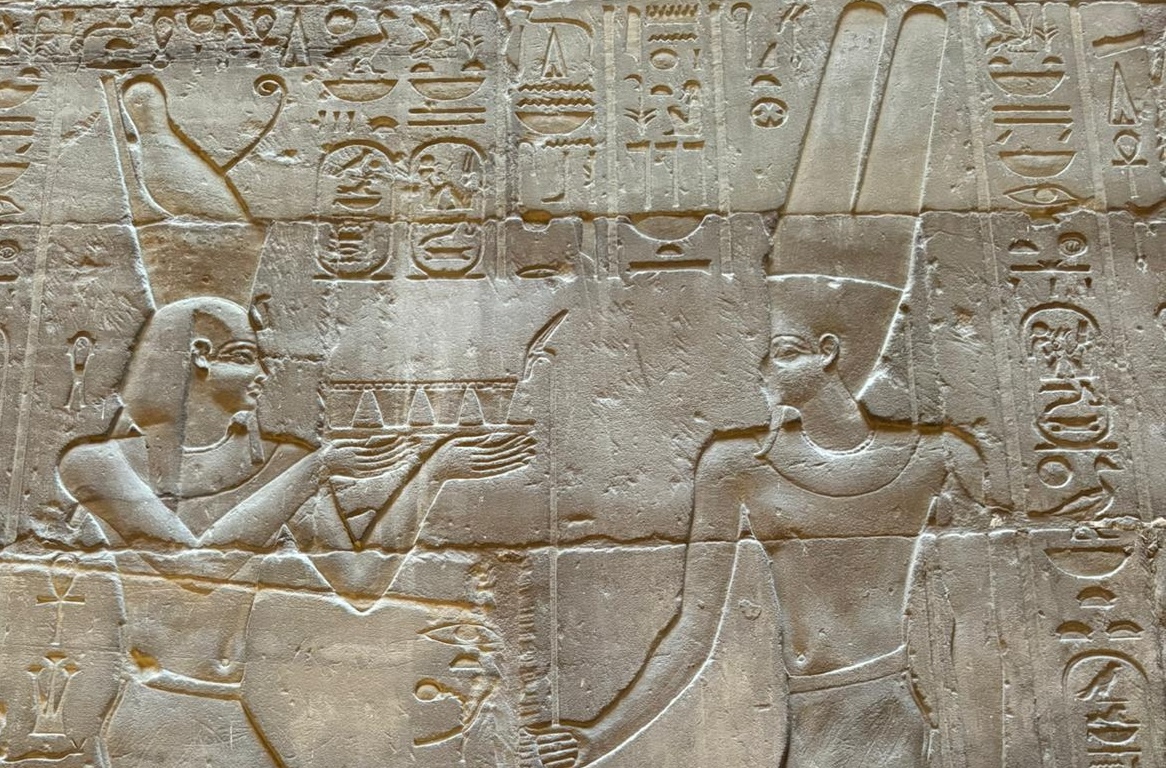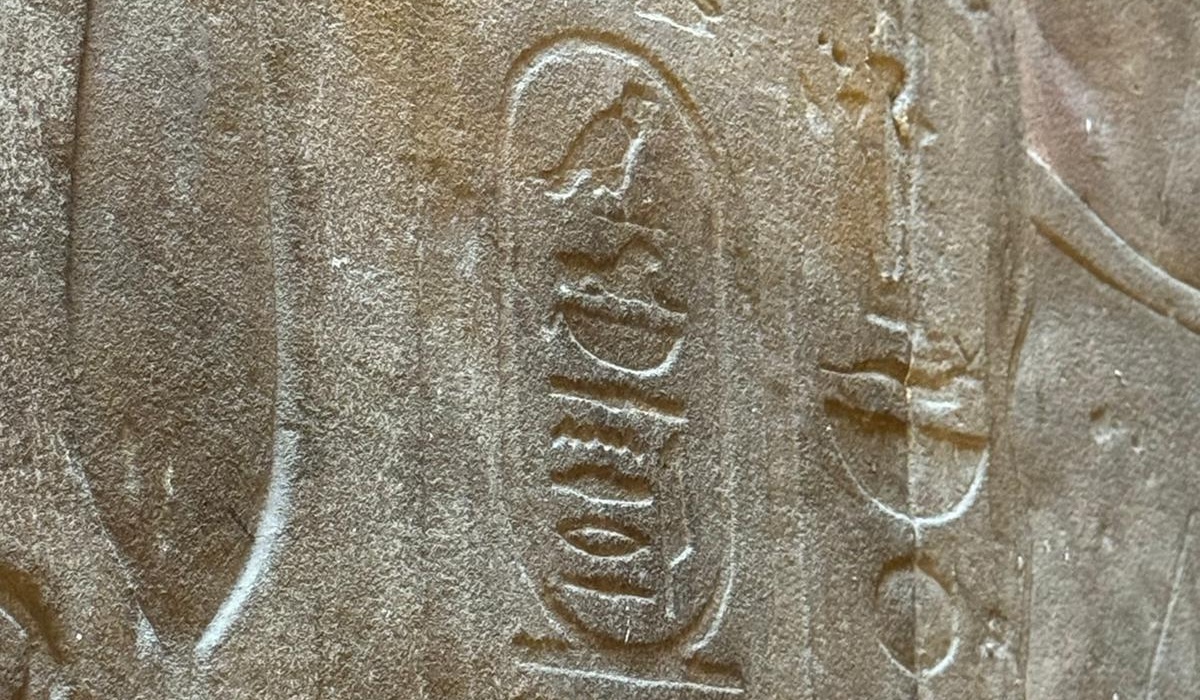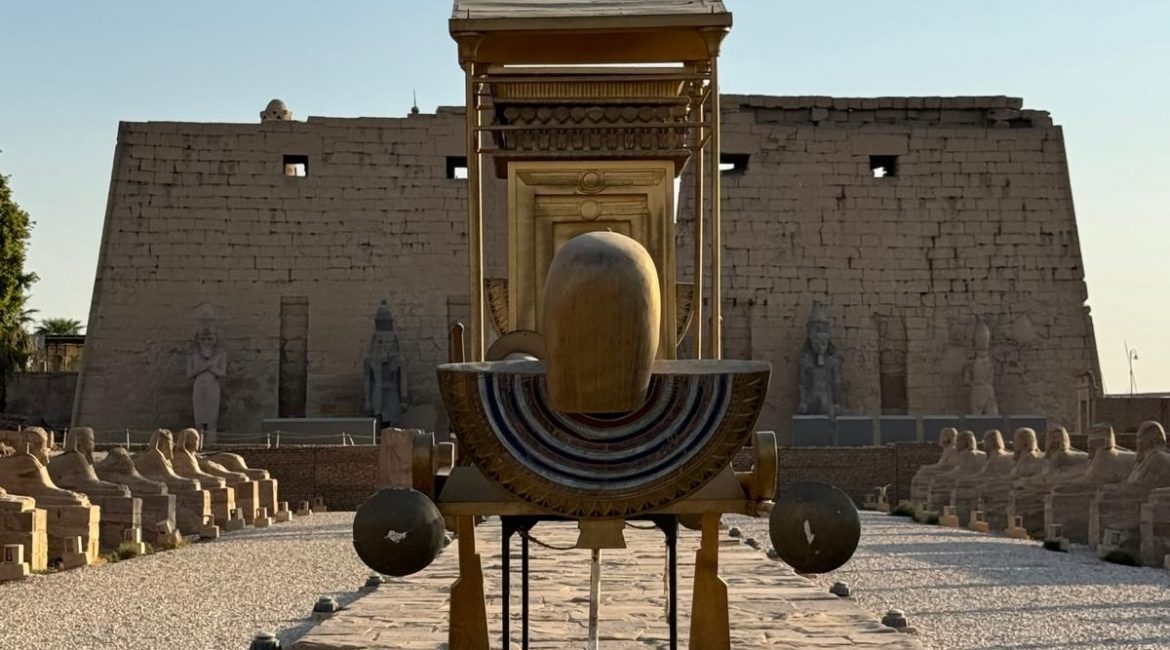This week, I set off on a Nile cruise tour of magnificent Egyptian sacred sites, like the exquisite Hathor temple at Dendara and the Amun-Ra sanctum of Karnak. I also visited the Valley of the Kings, and the popular ruins of Luxor temple. To the rear of the temple at Luxor is a chapel, on which the walls are engraved an Egyptian-style image of none other than Alexander the Great (356 BC–323 BC). Here he is shown receiving his blessing to rule Egypt from Amun-Ra, and his hieroglyphic cartouche is also displayed. This Macedonian, who reconfigured the political and cultural landscape of Eurasia, famously imbibed the Egyptian notion of kingship: that he was somehow at least semi-divine. More intriguingly, his presence here may have direct correlation with the presence of a Buddha statue found at Berenike last year.
In fact, the story of Alexander has accidentally become a bookmark that helps “temporalize” Buddhist history, situating it among reliable dates and events that have become invaluable to our understanding of Buddhism as not only a phenomenon in time and space, but also as a spiritual, cultural, and artistic movement.

We know that in 332 BC, Alexander invaded Egypt as part of his campaign against Achaemenid Persia. To what must have been his delight and relief, the Egyptians were fed up of Persian administration and welcomed the young warrior-king as their liberator. Alexander not only took the empire without a battle, but also had the chance to tout himself as a divine being chosen for godhood or at least divinely-approved sovereignty. Like the pharaohs of old, he was given the epithet “Son of Ra.”
The new pharaoh founded Alexandria one year later in 331 BC. Researchers believe that the Buddha image, exquisite and soberly clothed in Gandharan robes and with a patterned halo, could have been made in this cosmopolitan city of learning, where Egyptians, Greeks, and Romans might have encountered Buddhists several centuries later. We also know that between 327 BC and 325 BC, Alexander launched a series of invasions into India. The subsequent settlement of Greeks resulted in the blending of Hellenism with Indian culture across Central Asia and northern India. The rise of the Indo-Greek kingdoms led to the appearance of one of the two earliest schools of anthropomorphic Buddhist art (coming from the former satrapy of Gandhara).

When Alexander died suddenly in Babylon in 323 BC, two of his diadochi (successor generals), Ptolemy and Seleucid, assumed dynastic control over the regions of Egypt and Central Asia respectively. In the region of the Indian subcontinent, where kings and lords continued to view endlessly for power, the undefeated Macedonian left behind the memory of a great conqueror to be emulated and surpassed soon after in Chandragupta Maurya (350–295 BC), who fought the Indo-Greeks and signed a peace treaty with them. Chandragupta’s grandson, Ashoka the Great, would provide the first epigraphic evidence of Buddhist belief via his pillar edicts, from the period of 268 to 232 BC. Thanks to Ashoka, we have the “long” (Sri Lankan) and “short” (Chinese and Tibetan) chronologies of the Buddha’s life, all dependent on the date of the Indian monarch’s accession.
As history would have it, Egypt and India enjoyed several Greek bridges. The first was Alexander. The second was Pyrrho, a philosopher who travelled with Alexander to India and subsequently founded a school of thought that strikingly resembles Buddhism. The third was an Indo-Greek king called Menander, whose patronage of Buddhism and philosophical initiative would earn him a place among the Buddhist scriptures themselves.
Together, these bridges embodied a transformational era for Eurasia, Buddhism, and civilization. By historical fiat, a Shakyan prince-turned-sage’s religion would shape and be shaped by a Macedonian world conqueror’s legacy, and then by the first charkravartin himself, Ashoka.
Related news from BDG
Archaeologists Unearth Ancient Buddha Statue in Egypt
Related features from BDG


